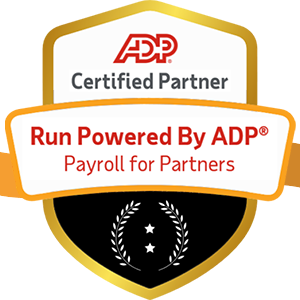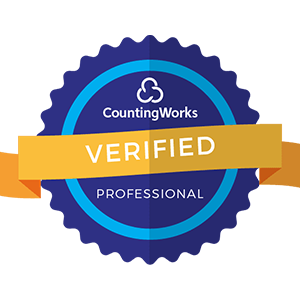
The Global Talent Reality: Remote work has expanded the global talent market by 180%, with 73% of teams expected to have remote workers by 2028. Organizations successfully recruiting globally report 35% faster time-to-fill rates and access to talent pools five times larger than local markets. Yet only 41% of companies have developed strategic approaches to global talent acquisition.
The fundamental assumptions underlying talent acquisition have shifted dramatically in recent years. Geographic proximity, once considered essential for effective collaboration, has become optional rather than mandatory. This transformation extends far beyond simple remote work adoption to encompass a complete reimagining of how organizations source, evaluate, and integrate talent.
The COVID-19 pandemic accelerated trends that were already reshaping global labor markets. Companies that previously required local presence discovered that distributed teams could maintain productivity while accessing broader talent pools. Simultaneously, workers gained confidence in remote work arrangements, leading to fundamental shifts in career preferences and job search behaviors.
This evolution creates both unprecedented opportunities and complex challenges. Organizations can now compete for talent globally rather than just locally, but they must also defend against global competition for their own workforce. The playing field has expanded dramatically, requiring new strategies and capabilities to succeed.

Organizations that successfully implement borderless talent strategies gain multiple competitive advantages that compound over time to create sustainable differentiation.
Global recruitment multiplies available talent by factors of five to ten compared to local markets, depending on role requirements and location constraints. For specialized technical positions or emerging skill areas, this expansion often means the difference between filling positions quickly and struggling with prolonged vacancies.
Geographic expansion also provides access to diverse educational systems and professional development approaches that create varied skill sets and problem-solving methodologies. This diversity of training and experience enriches teams while reducing groupthink risks that can limit innovation.
Market arbitrage opportunities allow organizations to access premium talent at competitive costs by recruiting from regions with favorable currency exchange rates or lower living costs. This economic efficiency can significantly improve hiring budget effectiveness while maintaining quality standards.
Cultural diversity in teams drives measurably better business outcomes across multiple dimensions. McKinsey research indicates that companies with ethnically diverse executive teams are 33% more likely to outperform peers on profitability, while gender-diverse teams show 21% higher likelihood of outperformance.
Global teams bring varied perspectives to problem-solving that reflect different cultural approaches to challenge resolution, risk assessment, and opportunity identification. This cognitive diversity proves particularly valuable for organizations serving global markets or developing products for diverse customer bases.
Language capabilities within global teams enable more effective communication with international clients, partners, and market segments. Native speakers provide cultural insights that extend beyond translation to include context, nuance, and relationship-building approaches that drive business success.
Time zone distribution allows organizations to achieve near-continuous operations without traditional shift work arrangements. Well-designed global teams can provide customer support, development work, or operational monitoring across 24-hour cycles with team members working during their preferred daylight hours.
Knowledge sharing becomes more dynamic when teams span multiple regions, as questions and challenges can be addressed continuously rather than waiting for specific team members to be available. This continuous collaboration accelerates problem resolution and project advancement.
Resilience improvements emerge from geographic distribution that reduces risks associated with local disruptions, natural disasters, or regional economic challenges. Distributed teams provide operational continuity that centralized organizations cannot match.
Successful borderless talent acquisition requires sophisticated approaches that address the complexities of international hiring while leveraging available opportunities effectively.
Comprehensive market research identifies regions with strong talent availability for specific skill sets while considering factors like education quality, language capabilities, cultural alignment, and economic stability. This analysis guides resource allocation and recruiting focus areas.
Talent mapping exercises reveal competitive landscapes in different regions, including salary expectations, common benefits, career progression patterns, and factors that influence job change decisions. Understanding these regional differences enables more effective value propositions and competitive positioning.
Skills assessment approaches must account for different educational systems and professional development paths that may produce equivalent capabilities through different routes. Traditional credential evaluation may miss highly qualified candidates whose backgrounds don't match familiar patterns.
Modern global recruitment relies heavily on technology platforms that can manage complex workflows across multiple time zones, languages, and regulatory environments. Applicant tracking systems must support international compliance requirements while providing efficient candidate management capabilities.
Video interviewing platforms become essential infrastructure for global recruitment, requiring features like multi-language support, reliable international connectivity, and recording capabilities for asynchronous collaboration among hiring team members in different time zones.
Assessment technologies must account for cultural differences in communication styles, test-taking approaches, and technology access. Standardized assessments developed for specific cultural contexts may not provide accurate evaluations of candidates from different backgrounds.
Cross-cultural interview training helps hiring teams recognize and account for communication style differences that might otherwise lead to misinterpretation of candidate capabilities. Direct communication preferences, eye contact norms, and question-answering approaches vary significantly across cultures.
Language considerations extend beyond basic proficiency to include business communication effectiveness, written communication skills, and accent accommodation. Organizations must establish clear language requirements while avoiding unnecessary barriers that exclude qualified candidates.
Cultural integration planning begins during the recruitment process by setting appropriate expectations about company culture, communication norms, and collaboration approaches. Early cultural alignment reduces onboarding challenges and improves long-term retention rates.

International hiring creates complex legal and compliance requirements that vary significantly across jurisdictions and employment arrangements.
Worker classification rules differ dramatically between countries, affecting whether individuals can be engaged as employees, independent contractors, or through other arrangements. Misclassification can result in significant legal and financial penalties while creating compliance risks.
Employment law compliance includes understanding notice periods, termination procedures, minimum wage requirements, overtime regulations, and mandatory benefits that vary by jurisdiction. These requirements affect both hiring decisions and ongoing employment management.
Tax obligations include corporate tax liability, payroll tax requirements, and individual tax implications for both employers and employees. Professional tax advice becomes essential for organizations engaging workers in multiple jurisdictions.
International data transfer regulations like GDPR affect how candidate information can be collected, stored, and shared across borders. Compliance requires understanding both source country and destination country requirements for personal data handling.
Background check procedures must comply with local regulations while meeting organizational security requirements. Some countries restrict background check scope or require specific consent procedures that affect hiring process design.
Document verification and right-to-work confirmation become more complex in international contexts where traditional verification methods may not apply. Alternative approaches may be necessary while maintaining security and compliance standards.
Work visa requirements vary dramatically based on employee citizenship, destination country, role type, and company size. Understanding these requirements early in the recruitment process prevents disappointment and delays for both candidates and employers.
Sponsorship obligations include both initial visa processing and ongoing compliance requirements that may affect employment terms and conditions. Some visa categories include restrictions on job changes or geographic movement that impact employment flexibility.
Processing timelines for work authorization can range from weeks to months, requiring careful planning and candidate communication to manage expectations and maintain engagement throughout extended processes.
Organizations beginning global recruitment efforts benefit from structured approaches that build capability gradually while minimizing risks associated with international expansion.
Geographic prioritization helps focus initial efforts on markets with favorable conditions for successful international hiring. Factors include talent availability, legal complexity, time zone alignment, and cultural compatibility with organizational values.
Pilot programs allow organizations to test global recruitment approaches with limited scope and investment while building internal expertise and refining processes. Small-scale pilots provide learning opportunities without overwhelming internal capabilities.
Success metrics for pilots should include both recruitment outcomes and operational effectiveness indicators. Time-to-hire, candidate quality, cost-per-hire, and retention rates provide quantitative measures, while candidate and hiring manager satisfaction offer qualitative insights.
Global recruitment processes require standardization to ensure consistent candidate experiences and fair evaluation procedures while allowing localization to address cultural and legal differences in specific markets.
Interview protocols must balance consistency with cultural sensitivity, ensuring that all candidates are evaluated fairly while accommodating different communication styles and cultural norms that might affect interview performance.
Offer negotiations become more complex in international contexts where salary expectations, benefit preferences, and contract terms vary significantly. Standardized frameworks with local flexibility help manage these negotiations effectively.
Workflow automation becomes crucial for managing complex international recruitment processes that involve multiple stakeholders across different time zones. Automated status updates, reminder systems, and progress tracking help maintain momentum and communication.
Integration between recruitment systems and downstream HR processes ensures smooth transitions from hiring through onboarding and beyond. Disconnected systems create administrative burdens and potential compliance risks.
Reporting and analytics capabilities must account for international variations in metrics and provide insights that support both operational management and strategic decision-making about global recruitment effectiveness.
Successfully hiring international talent represents only the beginning of the value creation process. Effective integration and management practices determine whether global recruitment investments generate positive returns.
Comprehensive onboarding programs for international hires must address both standard organizational orientation and specific considerations related to cultural integration, communication expectations, and remote work effectiveness.
Cultural mentorship programs pair international hires with experienced team members who can provide guidance on unwritten cultural norms, communication practices, and navigation of organizational dynamics that may not be obvious to newcomers.
Technology provisioning becomes more complex for international employees who may have different hardware preferences, software access restrictions, or connectivity limitations that affect their ability to integrate effectively with existing teams.
Meeting scheduling across multiple time zones requires thoughtful planning that distributes inconvenient meeting times fairly rather than consistently disadvantaging team members in specific regions. Rotation schedules and asynchronous collaboration help address these challenges.
Communication platform selection must consider reliability, feature availability, and user experience across different regions where internet infrastructure, censorship, or technology preferences may vary significantly.
Documentation and knowledge sharing practices become more important in global teams where synchronous communication opportunities are limited. Clear, comprehensive documentation helps bridge time zone gaps and cultural differences.
Performance evaluation systems must account for cultural differences in feedback reception, goal-setting approaches, and professional development preferences. Standardized evaluation criteria may need cultural adaptation to be effective across global teams.
Career development planning becomes more complex when team members are located in different regions with varying advancement opportunities, compensation structures, and professional development resources.
Recognition and reward systems should consider cultural preferences for public versus private recognition, individual versus team accomplishments, and monetary versus non-monetary rewards that vary across different cultural contexts.
The global talent acquisition landscape continues evolving rapidly as new technologies, regulatory changes, and workforce preferences shape future possibilities and challenges.
Artificial intelligence applications in global recruitment include automated candidate sourcing, language translation, cultural communication coaching, and bias detection in evaluation processes. These technologies can reduce barriers to international hiring while improving process efficiency.
Virtual reality and augmented reality technologies may enable more immersive candidate evaluation and workplace preview experiences that help international candidates and employers make better-informed decisions about cultural and role fit.
Blockchain technology could simplify credential verification and background checking across international boundaries by providing tamper-proof records that are recognized across multiple jurisdictions.
Immigration policy changes affect work visa availability and processing times, potentially opening or closing specific talent markets for international recruitment. Organizations must monitor policy developments in key talent source countries.
Tax harmonization efforts in some regions may simplify international employment arrangements, while trade tensions and economic nationalism could create new barriers to global talent mobility.
Economic volatility affects salary expectations and currency exchange rates that influence the cost-effectiveness of recruiting from specific regions. Organizations need flexible compensation strategies that can adapt to changing economic conditions.
Younger generations show stronger preferences for flexible work arrangements and international career opportunities, making global remote work more attractive to high-potential candidates.
Professional development expectations increasingly include cross-cultural experience and global collaboration opportunities that remote international work can provide. Organizations offering these opportunities gain competitive advantages in talent attraction.
Work-life balance priorities vary across cultures and generations, requiring flexible approaches to benefits, working hours, and professional development that can accommodate diverse preferences and requirements.

Effective global recruitment programs require sophisticated measurement approaches that track both operational efficiency and strategic value creation.
Traditional recruitment metrics like time-to-hire and cost-per-hire remain important but may require adjustment for international contexts where longer processing times and higher coordination costs are normal.
Quality of hire measurements should include cultural integration success, team collaboration effectiveness, and long-term retention rates that may differ from local hire patterns due to different motivations and career expectations.
Diversity and inclusion metrics become more complex in global contexts where multiple dimensions of diversity intersect and where cultural definitions of inclusion may vary across regions.
Cost-benefit analysis for global recruitment must include both direct hiring costs and indirect expenses like legal compliance, technology infrastructure, and management overhead that support international employment.
Productivity measurements should account for learning curves associated with cultural adaptation and remote work effectiveness that may affect short-term performance while delivering long-term value.
Innovation metrics might include idea generation rates, cross-cultural problem-solving effectiveness, and market expansion capabilities that diverse global teams enable.
Regular assessment cycles should examine both recruitment process effectiveness and post-hire integration success to identify optimization opportunities and best practice development.
Feedback collection from international hires provides insights into candidate experience improvements and cultural integration enhancements that can improve both recruitment outcomes and employee satisfaction.
Benchmarking against industry best practices and competitor approaches helps identify opportunities for improvement while understanding relative market positioning in global talent competition.
Organizations planning to implement or expand global recruitment capabilities benefit from structured approaches that build expertise gradually while managing complexity and risk.
Market research and opportunity assessment identify the most promising regions for initial international recruitment efforts based on talent availability, competitive factors, and organizational readiness.
Legal and compliance infrastructure development ensures that necessary frameworks are in place before beginning recruitment activities. This includes relationships with legal counsel, tax advisors, and compliance specialists in target markets.
Technology platform evaluation and implementation provides the foundation for efficient global recruitment operations. Integration with existing HR systems and workflow optimization reduces administrative burden and improves candidate experience.
Limited geographic scope pilots allow organizations to test global recruitment approaches while building internal expertise and refining processes. Focus on one or two markets initially to maintain quality and learning effectiveness.
Process documentation and standardization capture lessons learned from pilot experiences while establishing repeatable frameworks for expansion to additional markets.
Success measurement and optimization based on pilot results inform broader rollout strategies and help identify areas requiring additional attention or resource investment.
Geographic expansion to additional markets applies lessons learned from pilot programs while adapting to different regional characteristics and requirements.
Team capability development ensures that internal staff have the skills and knowledge necessary to manage increasingly complex global recruitment operations effectively.
Vendor and partner network expansion may include relationships with local recruitment firms, legal service providers, and technology vendors that support operations in multiple markets.
Advanced analytics and optimization use data collected from global recruitment operations to identify patterns, predict outcomes, and optimize resource allocation across different markets and roles.
Innovation and experimentation with new technologies, processes, and approaches help maintain competitive advantages while improving efficiency and candidate experience.
Strategic integration with broader business planning ensures that global talent acquisition capabilities support organizational growth objectives and market expansion strategies.
Borderless talent acquisition represents a fundamental shift in how organizations approach workforce development and competitive positioning. Companies that successfully implement global recruitment strategies gain access to dramatically expanded talent pools while building capabilities that support international growth and innovation.
The transformation requires significant investment in technology, processes, and expertise, but the potential returns—improved hiring outcomes, enhanced innovation, operational efficiency, and competitive advantage—justify the complexity and cost involved.
Success in global talent acquisition depends on balancing standardization with localization, leveraging technology while maintaining human connection, and managing complexity while delivering excellent candidate and employee experiences. Organizations that master these balances position themselves advantageously for long-term success in increasingly competitive global markets.
The future belongs to organizations that can attract, integrate, and retain talent regardless of geographic boundaries. By developing sophisticated global recruitment capabilities, companies create sustainable competitive advantages that are difficult for competitors to replicate while building diverse, high-performing teams capable of driving innovation and growth in an interconnected world.
The choice facing organizations today is not whether to embrace global talent acquisition, but how quickly and effectively they can develop these capabilities. Those who act decisively and invest appropriately in global recruitment infrastructure will capture the best opportunities in an expanding global talent market, while those who hesitate risk being left behind by more agile competitors who recognize that talent knows no borders.


